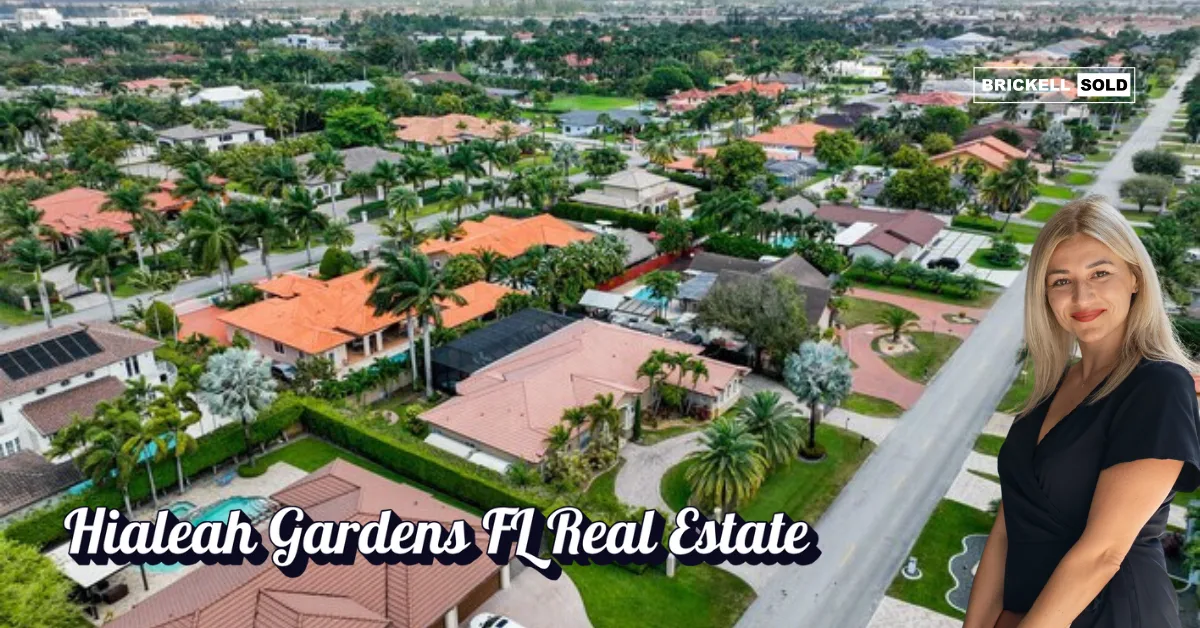Introduction
In the northwestern corner of Miami-Dade County lies a community often overlooked in the broader discussions of South Florida’s fast-paced growth: Hialeah Gardens. What started as a quiet, horse-loving town nestled beside the famous city of Hialeah has transformed over the decades into a thriving city of its own, complete with bustling residential zones, commercial districts, expanding infrastructure, and a strong sense of cultural identity.
This in-depth guide takes you through the vibrant landscape of Hialeah Gardens—from its humble origins to its contemporary lifestyle, real estate, governance, recreational offerings, and future potential. If you’re considering a move, a business opportunity, or simply want to understand this city better, this blog will serve as your comprehensive resource.
1. Historical Roots: From Farmland to Flourishing Suburb
The story of Hialeah Gardens begins in the mid-20th century. Originally developed in the 1940s, the area was incorporated as a city in 1948. Its roots were deeply agricultural, dominated by horse farms, plant nurseries, and wide stretches of green. In those early years, residents enjoyed a peaceful life punctuated by equestrian events and an affinity for open space.
What separated Hialeah Gardens from the densely populated urban centers to the east was its emphasis on residential tranquility and self-reliance. Its early settlers were determined to maintain a unique identity even as nearby Hialeah expanded.
Over time, however, the construction of major highways and the explosive growth of Miami-Dade County brought suburban development to its doorstep. The city gradually shifted from a rural village into a residential suburb, welcoming new homes, shopping centers, schools, and parks.
2. Geographic Significance and Accessibility
Hialeah Gardens is located northwest of Miami and just west of the city of Hialeah. It shares borders with Medley and Miami Lakes and lies within minutes of the Palmetto Expressway (SR 826), Interstate 75, and U.S. Route 27 (Okeechobee Road). This strategic location makes commuting to Miami International Airport, downtown Miami, and other neighboring communities easy and efficient.
Despite its modest size—just under 4 square miles—Hialeah Gardens is advantageously placed as a “gateway” community, ideal for families and businesses alike. Whether you’re heading north to Broward County or southeast into Miami’s urban core, Hialeah Gardens serves as a central node in South Florida’s sprawling metropolitan web.
3. Demographics and Community Diversity
Hialeah Gardens is home to over 23,000 residents, with a population density that reflects its suburban yet urbanized nature. The city is predominantly Hispanic and bilingual, with Spanish commonly spoken in both social and professional settings. This multicultural foundation informs everything from local cuisine to community events, music, and education.
The city’s population is largely middle-class, with a strong presence of working families, small business owners, and retirees. While many residents are first- or second-generation immigrants, there’s also a growing cohort of younger residents who were born and raised in the community and are choosing to build their futures locally.
4. City Governance and Leadership
Hialeah Gardens is governed by a mayor-council system. The city’s leadership has focused heavily on community development, public safety, infrastructure modernization, and transparent governance. Over the years, city hall has spearheaded initiatives such as roadway expansions, stormwater system improvements, and community beautification.
In addition to administrative offices, Hialeah Gardens boasts a dedicated police department and various municipal services that maintain the safety, cleanliness, and functionality of the community.
5. Real Estate Landscape: From Starter Homes to New Developments
The housing market in Hialeah Gardens is vibrant and steadily growing. Real estate in the area ranges from older single-family homes built in the 1970s and ’80s to newer townhomes, duplexes, and custom properties developed in the 2000s and beyond.
Residential Characteristics:
-
Single-family homes dominate the landscape, often featuring three to four bedrooms, modest yards, and Mediterranean-style architecture.
-
Townhomes and duplexes are growing in popularity, particularly among younger buyers and downsizing retirees.
-
Condominiums exist but are less prevalent than in other South Florida cities.
In recent years, developers have shown increasing interest in Hialeah Gardens due to its available land and favorable zoning laws. New developments, particularly west of the Palmetto Expressway, offer modern amenities, energy-efficient construction, and smart-home features.
Affordability and Trends:
The city remains more affordable than Miami, Coral Gables, or Doral. While home prices have appreciated in the last decade, they remain relatively accessible. A mid-range single-family home typically ranges from $375,000 to $475,000, though upscale homes can climb much higher. Rental properties are also in demand, especially among young professionals and families who commute to nearby commercial centers.
Get early access to Miami pre-construction condos and explore exciting investment opportunities in one of the hottest markets in the U.S.
6. Commercial Growth and Economic Vitality
Hialeah Gardens has evolved into more than a bedroom community. Its commercial sectors are rapidly expanding, driven by small businesses, retail plazas, logistics companies, and medical offices.
The city’s main commercial corridor runs along Okeechobee Road, where you’ll find:
-
Retail shopping centers
-
Fast-food chains and independent eateries
-
Medical clinics and wellness centers
-
Bank branches and service providers
In recent years, local government has encouraged business-friendly policies to attract more investment. Industrial warehouses and distribution centers are becoming increasingly common, particularly due to the city’s proximity to freight routes and Miami International Airport.
Find your next home or investment in South Florida through Brickell Miami real estate listings, featuring condos, luxury properties, and waterfront residences.
7. Parks and Recreation: Spaces for All Ages
Despite its compact size, Hialeah Gardens prioritizes outdoor living and recreation. The city’s Parks and Recreation Department manages a network of parks, sports facilities, and community programs that enhance residents’ quality of life.
Top Parks and Facilities Include:
-
Westland Gardens Park: A multi-purpose space with walking paths, sports fields, and picnic areas.
-
Golden Eagle Park: Known for its well-maintained soccer fields and playgrounds.
-
Joe Sherron Park: Offers open green spaces and shaded areas perfect for weekend relaxation.
-
Bernie Wilson Park: A community favorite for children’s parties, complete with gazebos and family-friendly amenities.
Programs and Events:
-
After-school programs for children and teens
-
Senior fitness classes and wellness initiatives
-
Seasonal festivals, including cultural celebrations and holiday events
-
Summer camps and youth sports leagues
Whether you’re a fitness enthusiast, a parent, or simply enjoy spending time outdoors, Hialeah Gardens has something to offer.
Stay informed with expert insights, trends, and investment tips from the Miami real estate blog, your go-to source for Brickell and beyond.
8. Education: A Focus on Learning and Growth
Education in Hialeah Gardens is overseen by Miami-Dade County Public Schools, which is known for its size, diversity, and comprehensive curriculum.
Public Schools:
-
Hialeah Gardens Elementary School
-
Hialeah Gardens Middle School
-
Hialeah Gardens Senior High School
These schools offer strong academic programs, bilingual instruction, extracurricular activities, and support services. Graduation rates are steadily improving, and parental involvement is strong, reflecting the community’s value on education.
Additionally, several private and charter schools operate within or near the city, providing families with alternative educational pathways.
Stay ahead of the market by browsing the latest Hialeah Gardens property listings for residential and investment opportunities.
9. Culture, Arts, and Community Events
Hialeah Gardens may not boast grand theaters or art museums, but its cultural vibrancy lies in its community-centered events and traditions. The city celebrates numerous cultural festivals, including Hispanic heritage events, local art showcases, and food-focused gatherings that highlight its culinary diversity.
Music, particularly Latin genres like salsa, merengue, and reggaeton, is a strong part of community life. Local events often feature live performances, dance groups, and food trucks serving Cuban, Dominican, and Central American cuisines.
The city’s community center frequently hosts:
-
Art workshops
-
Family movie nights
-
Senior socials
-
Youth mentorship programs
Whether you’re buying or renting, find the best selection of homes in Hialeah Gardens with updated pricing and neighborhood insights.
10. Transportation and Infrastructure
Connectivity is a strength of Hialeah Gardens. The city lies near several major roadways:
-
Palmetto Expressway (SR 826)
-
U.S. Route 27
-
Interstate 75
This network makes commuting into downtown Miami, the airport, or northern suburbs relatively easy.
Public transportation is available via Miami-Dade Transit, including bus routes and connections to Tri-Rail stations. Road infrastructure is regularly maintained, and the city continues to invest in traffic management systems and pedestrian safety.
11. Safety and Public Services
Hialeah Gardens maintains a low-to-moderate crime rate and is considered a relatively safe place to live in Miami-Dade County. The Hialeah Gardens Police Department operates with modern equipment, community policing strategies, and neighborhood watch initiatives.
Emergency services are responsive, and the city coordinates with county fire-rescue departments to handle medical emergencies and natural disaster preparedness.
12. Future Outlook: Smart Growth and Sustainable Development
City planners in Hialeah Gardens are looking toward the future with a focus on sustainability, smart growth, and technological integration. Upcoming projects include:
-
Stormwater and sewer upgrades
-
Green infrastructure and energy-efficient buildings
-
Affordable housing initiatives
-
Commercial rezoning to attract new industries
The city is also exploring partnerships for public-private developments that could introduce more mixed-use spaces—integrating housing, retail, and public services into single, walkable districts.
Discover current listings and home values in Hialeah Gardens real estate to explore your homeownership opportunities in this thriving Miami-Dade city.
Conclusion: Why Hialeah Gardens is a Hidden Gem in Miami-Dade County
Hialeah Gardens offers a compelling alternative to the congestion and high cost of living found in some neighboring cities. It combines the conveniences of urban life with the close-knit feeling of a suburban community. With affordable real estate, cultural richness, strong public services, and a strategic location, the city stands as one of South Florida’s most promising places to live, work, and raise a family.
Whether you’re a homebuyer seeking a quieter neighborhood, an entrepreneur scouting for business opportunities, or a long-time resident watching your city grow—Hialeah Gardens is a place full of potential, rooted in history and aiming for the future.

